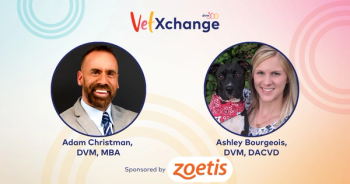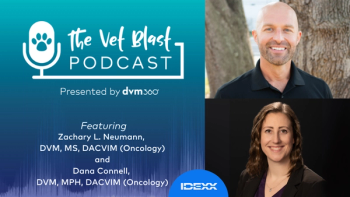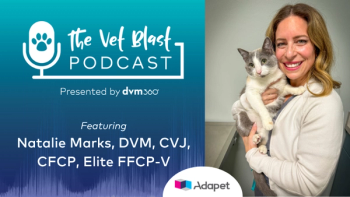
A Katrina tale
Animal rescue in the roiling storm.
Patty Hegwood is a New Orleanian through and through. She grew up there and found her life's work as a co-owner of Ark Animal Hospital in the New Orleans suburb of Jefferson, La., a for-profit veterinary hospital with a nonprofit animal-welfare arm. She, along with friend and co-owner Dr. Rollie Norris, helped build the first high-volume spay-and-neuter clinic in the New Orleans area, and Ark used a sliding scale for clients based on need. After Hurricane Katrina, Hegwood left the Big Easy. But not immediately. Right after the hurricane, she was knee-deep in flood waters and stray pets.
Hegwood was one of the people who stayed in New Orleans during and after the hurricane to try to reunite pets with their owners. "We kept finding cats and dogs that had gone a bit squirrelly and feral from lack of food and people contact," Hegwood says. During the storm, Hegwood holed up with more than 150 animals-her own along with those being housed at Ark Animal Hospital-in a feed store two blocks from her hospital and a mile from the flooding.
When the phones came back on after the hurricane, they rang off the hook. "People knew we were watching animals, and they kept calling and telling us they'd left their cat or dog, and could we go to their house," Hegwood says. Her husband volunteered on a flatboat picking up abandoned pets-even iguanas-from second-story rooms, roofs, and porches on flooded streets. Rescue boats-her husband's included-would come back with 80 to 100 pets and promptly leave again to find more. Then trucks would show up to take the animals to shelters in outlying areas. Hegwood and other volunteers stayed for several weeks in St. Bernard Parish, one of the hardest-hit neighborhoods. Residents, veterinarians, hospital staff, and veterinary companies sent volunteers and supplies to help.
During this time, the New Orleans area seemed like a ghost town. Hegwood and a drug company representative would drive animals and supplies around in a Home Depot truck on empty interstates. "It was like the Old West, like The Omega Man," she says, referring to the film's post-apocalyptic emptiness. But as bleak as the city was, the animal rescue crew found a way to centralize the databases of missing animals. Many pets reached their owners; many didn't. "But many more found homes than had we not tried," Hegwood says.
Hegwood's next job showed up in the person of Best Friends Animal Society CEO Paul Berry. "I was covered in disgusting filth from five days of animal rescue and transport, and he and the Best Friends people came walking in the door," Hegwood says. "I collapsed in his arms. They were like the cavalry." Best Friends had shown up to help, and eventually Berry offered Hegwood a job. She ultimately became Best Friends' director of animal care at its sprawling complex in Kanab, Utah. But she visits family, friends, and best friend and former partner Dr. Norris a few times each year.
"I wear my pendant all the time. It says, 'I know what it means to love New Orleans,'" she says.
Best Friends Animal Society's Web site is
Newsletter
From exam room tips to practice management insights, get trusted veterinary news delivered straight to your inbox—subscribe to dvm360.






